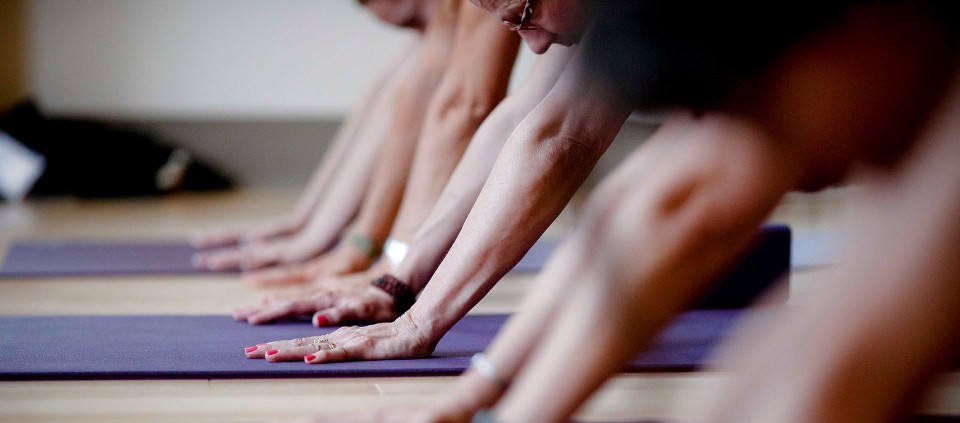Asana: The Big Picture

What I continue to love most about asana, independent of its extraordinary health benefits, is the way in which it consistently and quietly teaches us about ourselves and our relationship to the world.
When we are on our yoga mat, we develop physical strength and flexibility. But, more importantly, we are given a very vivid lens through which to discover who we are, and an equally vivid process through which we can shift habits that do not serve us and cultivate ones that do.
If this all sounds a bit esoteric, let me be more specific, because one of the most compelling things about yoga is that the lessons are so tangible and immediate.
Our yoga mat is like a mirror. Whatever our tendencies—how we think about and treat ourselves, how we perceive ourselves in terms of those around us—will all in some way be revealed on the yoga mat, and because of the potency of yoga, these tendencies will come up in quite glaring and hard-to-ignore ways. Our experience when we practice is like a perfect, intensified microcosm of our experience off the mat.
That said, the great gift of yoga is that not only does it reveal patterns, but it also provides a forum in which to address them, so we can shift those elements that are not so useful, and reinforce those that move our lives forward. And what we discover on the mat can then become a blueprint for life.
The physical practice, in other words, becomes a vehicle for transformation of mind and spirit. Because as we focus on the physical details of the practice, exploring and refining our alignment and breath, we also learn to focus and quiet our minds. Not in some abstract, elusive way, but through the very immediate experience of taking our attention off habitual thought patterns and turning it to what is actually happening in our postures. Through this process, we learn to locate ourselves more firmly in the present moment.
And it’s this willingness to be fully present that allows us to observe ourselves more accurately, and then take more skillful action—the essence of yoga according to the Bhagavad Gita. Everyone’s path in asana is different, of course, but we are all on a similar journey, towards greater clarity about who we are and how we inhabit our bodies and the world at large.
In purely physical terms, some of us come to yoga very flexible, but lacking the strength to support our flexibility. Some of us come to yoga strong and muscular, but also tight. Energetically, some of us get onto the mat and have an overabundance of excitement or ambition. Others come onto the mat needing to develop exactly the kind of heat and enthusiasm that someone else must learn to balance with more calm. For all of us, the goal is to temper what we have too much of and to cultivate what does not come as naturally. And it’s within that very process of exploring the parts of ourselves that are not immediately accessible that we start to understand how limitless our experience can really be.
As the great teacher and father of Ashtanga Yoga, Sri. K. Pattahbi Jois, always used to say, “Do your practice, all is coming.”
Find out about upcoming programs with Natasha Rizopoulos at Kripalu.
This essay was originally published on Natasha’s blog.
Natasha Rizopoulos is a senior teacher at Down Under Yoga in Boston. She is the featured teacher in the Yoga Journal Step-by-Step Home Practice DVD series.
Full Bio and Programs